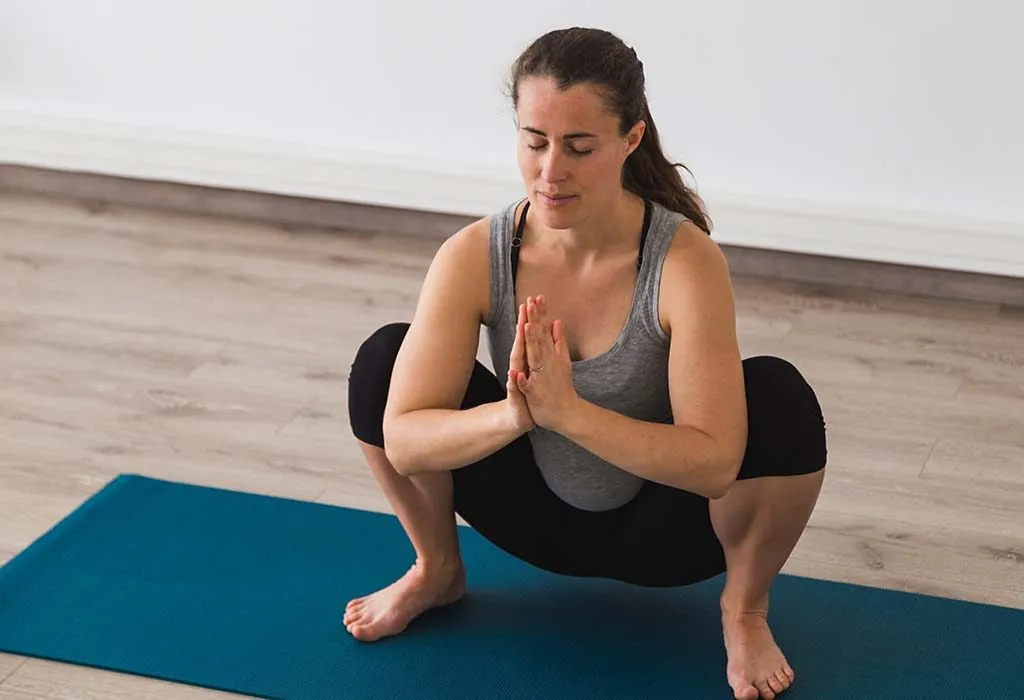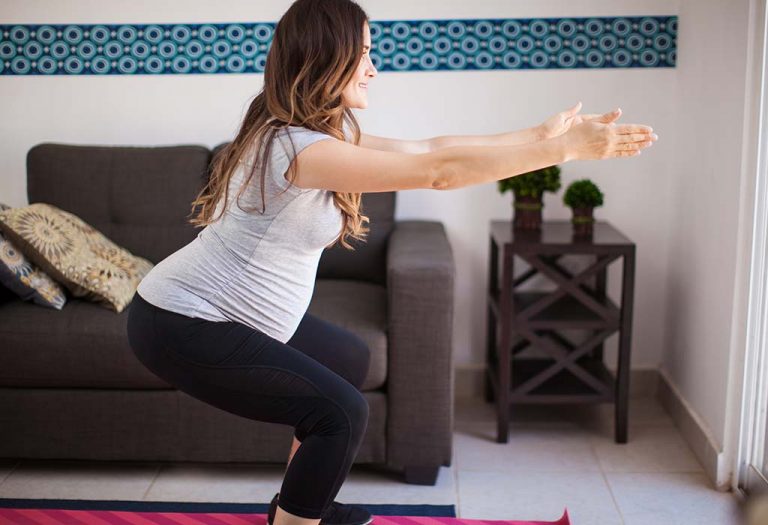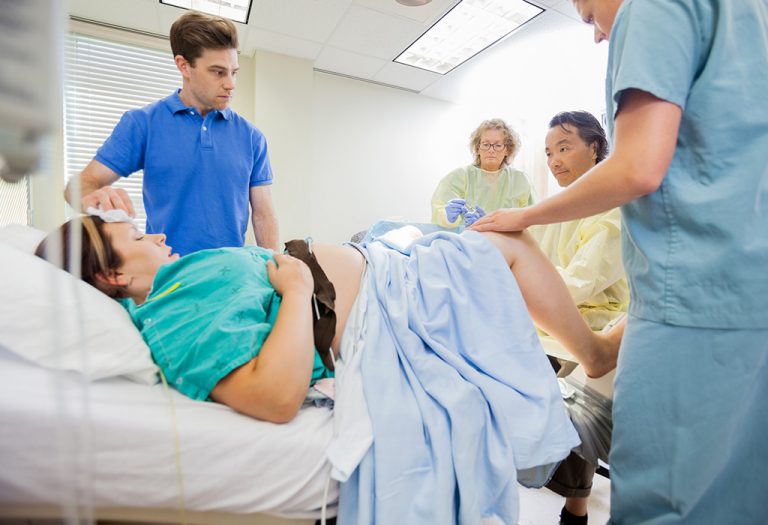Do Squats Induce Labor – How Does It Help?

There are many ways in which pregnant women can induce labour naturally or through medical intervention, both of which are widely accepted practices. While some opt for doctor-recommended methods, others prefer natural techniques such as walking, acupuncture, or even squats to induce labor. The idea behind squats is that they may help the baby descend further into the pelvis, potentially encouraging contractions. However, as most women prefer natural methods, the question arises: whether squats actually help induce labour, or is it just an old wives’ tale? Some experts believe that squats can promote pelvic flexibility and improve blood circulation, which might aid in preparing the body for childbirth. Read on to find out more about whether squats truly help induce labour or if it’s simply a myth perpetuated over time.
Do Squats Help in the Water Breaking?
Squats have their own benefits, not only for building strength but also for the process of pregnancy. Performing squats every day during the final weeks of your pregnancy helps direct the baby into the birthing canal and into the right birthing position (1). This has actually resulted in the water breaking and assisted many women in giving birth naturally.
What Are the Benefits of Squats to Induce Labor?
Although squatting alone is not a foolproof method, it definitely has its benefits when it comes to inducing labour. A lot of women opt to do this as doctors have seen positive results associated with squatting and labour induction. Here are some benefits.
1. Pelvic Output
Squatting is a natural pose for humans to open up and relax the groin muscles. The American Pregnancy Association states that squatting can help improve pelvic output by up to 10% (2).
2. Strong Muscles
Squatting leads to stronger leg muscles which are necessary for the third trimester when it comes to the final push.
3. Decreased Labour Time
It is believed that squatting can lead to a decrease in labour time by eleven whole minutes! That seems to be a long time as each minute can feel like forever while trying to give birth (3).
4. Eases Constipation
Squatting helps ease constipation (4) which can happen in the last few weeks of pregnancy.
5. Creates Space
Squatting also helps to create more space so that the baby can move to the birthing canal by assuming the right birthing position.
The Right Way to Do Squats to Induce Labour
Now that we have covered the benefits of squatting in order to induce labour, it is important to know the right way to perform a squat so that you can keep your form right and not injure yourself. Read on to find out more about the steps involved in squatting exercise to induce labor:

- Stand straight with your feet spread apart.
- Lower your body in such a way that you are going to sit on an imaginary chair until your hips are parallel to the ground.
- Do not arch your back and make sure that you are able to maintain balance. If not, use your husband’s help.
- Ensure your heels are always touching the ground.
- Use your leg muscles and core to return to a standing position.
- Repeat this process as many times as your body allows you.
Things to Note When Doing Squats to Induce Labour
Squatting is a harmless exercise for the most part but, when you’re pregnant, you must be extra cautious with every move you make. In case you notice a baby breech, squatting may do more harm than good. In this situation, the baby is forced into the birthing canal without assuming the proper position. Make sure to take regular tests and keep in touch with your doctor so that you can exercise caution and make this an enjoyable process.

Alternative Exercises to Induce Labour Naturally
While squats are a popular method for encouraging labour, there are several other safe and effective exercises that may help prepare the body for childbirth. These movements focus on opening the pelvis, improving flexibility, and stimulating contractions naturally (5) (6).
1. Walking
Walking is a gentle yet effective way to encourage labour. The rhythmic motion helps the baby descend into the pelvis, while gravity and mild contractions may stimulate labour progression. Aim for 30-minute walks daily in the final weeks of pregnancy.
2. Pelvic Tilts (Cat-Cow Stretch)
Pelvic tilts strengthen the lower back and abdominal muscles while encouraging optimal fetal positioning. Performing this exercise on hands and knees (similar to yoga’s cat-cow stretch) can help relieve pressure and may promote labour readiness.
3. Prenatal Yoga (Hip-Opening Poses)
Prenatal yoga poses like Butterfly Stretch (Baddha Konasana) and Supported Squat (Malasana) help open the hips and relax the pelvic floor. These poses improve circulation and may encourage contractions when done regularly.
4. Stair Climbing
Climbing stairs sideways or at a moderate pace engages the pelvic muscles and may help the baby move downward. The gentle rocking motion can stimulate cervical dilation, but caution is advised to avoid overexertion.
5. Birth Ball Exercises
Using a birthing ball for gentle bouncing, hip circles, or rocking can promote pelvic mobility and relieve tension. Sitting on the ball in a wide-legged position may also encourage the baby to engage further in the birth canal.
6. Swimming & Water Aerobics
The buoyancy of water reduces joint pressure while allowing for gentle, full-body movements. Swimming or floating in a pool can help ease discomfort and may support labour progression by relaxing the muscles.
Precautions to Take When Doing Squats
Squatting comes to most of us naturally, but there are certain points that you should keep in mind while performing squats to start labour to ensure the safety of you and the baby.
- Make sure to exercise only on a flat surface.
- Wear loose clothes so that you do not feel suffocated.
- Make sure to eat healthy so as to meet the nutritional requirement.
- Do not let your knees cross your feet when you squat to prevent injury.
- Be sure to stay hydrated all day, every day.
- Do not push yourself to a point where you feel very tired. Listen to your body and be careful.
- Squats to bring on labour is a natural process but must be performed under supervision.
FAQs
1. Can doing squats too early in pregnancy harm the baby or trigger premature labor?
While squats are generally safe during pregnancy, excessive or intense squatting too early (especially in the first or second trimester) could potentially strain the pelvic floor or cause discomfort. However, there’s no strong evidence that squats alone can trigger premature labor unless combined with other risk factors. Always consult a doctor before starting any exercise regimen.
2. Are weighted squats (like goblet squats) safe for inducing labor near the due date?
Light-weighted squats (using a kettlebell or dumbbell) may help strengthen the legs and pelvic muscles, but heavy lifting is not recommended in late pregnancy. If attempting weighted squats, use very light resistance and focus on proper form to avoid injury. Most experts suggest bodyweight squats for labor induction instead.
3. Do squats work better for first-time moms or those who’ve given birth before?
Some anecdotal reports suggest that women who’ve had previous vaginal deliveries may respond more quickly to squatting as a labor-inducing method due to a more relaxed pelvic floor. However, there’s no scientific consensus—effectiveness varies individually. First-time moms might need more consistency with squats and other natural methods.
4. Can squats help turn a breech baby before labor starts?
While squats primarily aid in opening the pelvis and encouraging descent, they are not a proven method for flipping a breech baby. Exercises like Spinning Babies techniques or prenatal chiropractic care (Webster technique) are more effective for fetal positioning. That said, squats may help once the baby is head-down.
Many expectant mothers wonder, ‘Will squats induce labor?’—while they may help encourage the process, their effectiveness varies from person to person. We have understood the benefits and as well as the precautions that need to be taken while performing squats in order to induce labour. However, make sure that you are the baby are in safe hands and don’t get injured while performing these exercises. If you are very comfortable with squats, you can try variations of it or try to add weights by including kettlebells, only after the approval of your doctor.
References/Resources:
2. American Pregnancy Association – Vaginal Birth After Cesarean: VBAC
3. ResearchGate – Squatting in the second stage of labour: a randomised controlled trial
5. HSE – Exercise plans 0 to 12 weeks after pregnancy
6. National Library of Medicine – Care Practice #2: Freedom of Movement Throughout Labor
Also Read:
Common Interventions during Childbirth
Does Drinking Tea Help to Induce Labour?
Does Eating Dates Help in Inducing Labour?
Was This Article Helpful?
Parenting is a huge responsibility, for you as a caregiver, but also for us as a parenting content platform. We understand that and take our responsibility of creating credible content seriously. FirstCry Parenting articles are written and published only after extensive research using factually sound references to deliver quality content that is accurate, validated by experts, and completely reliable. To understand how we go about creating content that is credible, read our editorial policy here.























